Eutelsat 172B
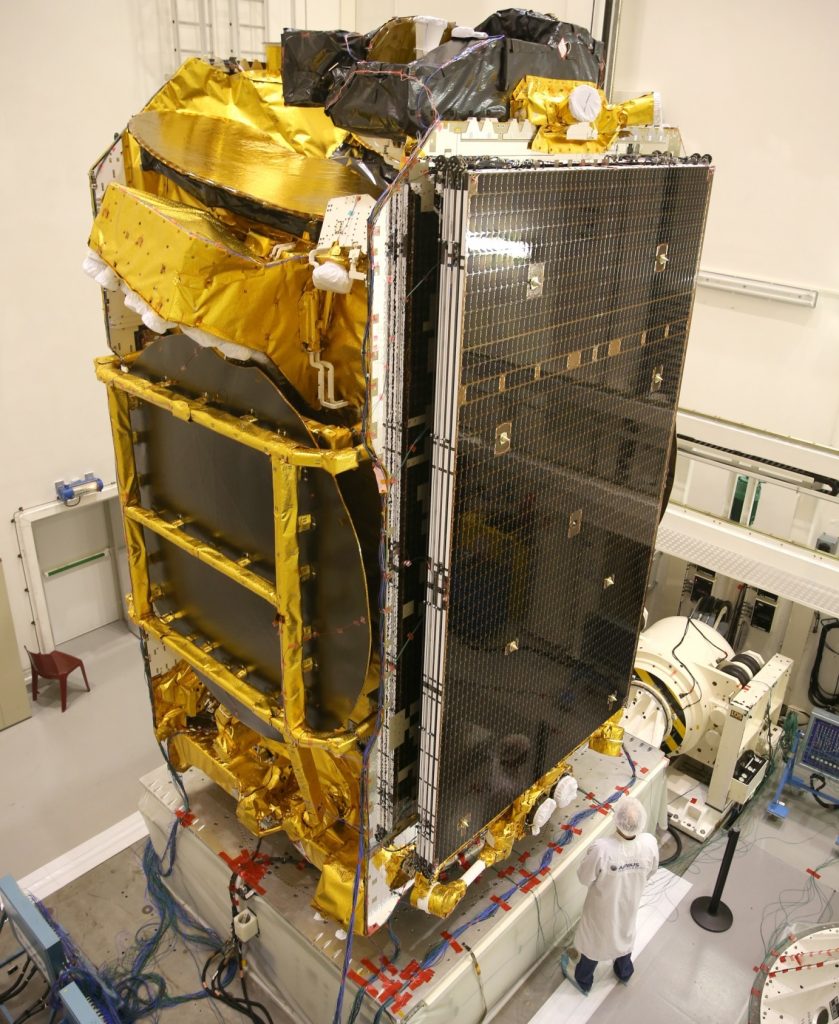
Eutelsat 172B is a high-performance tri-band communications satellite operated by Eutelsat, Luxembourg and built by Airbus Defence and Space based on an all-electric version of the company’s Eurostar-3000 satellite platform. Taking up station over the Pacific Ocean, Eutelsat 172B will support a variety of services with coverage from the U.S. West Coast throughout the Asia-Pacific Region including focused beams on Australia – creating a coverage zone from LA to Beijing and Anchorage to Perth.
The 3,551-Kilogram satellite will join close to 40 satellites that host capacity for Eutelsat – a leading telecommunications provider delivering the entire spectrum of communications services. Eutelsat’s satellites carry over 6,000 television stations to over 274 million homes, support corporate data networks and provide broadband connectivity on the ground, at sea and in flight.
Eutelsat 172B is designed to cater to a range of services via its multi-band payload – in-flight and maritime connectivity, cellular backhaul, corporate networks, video distribution and government services. The satellite hosts three distinct payloads – 14 C-Band transponders will deliver increased power and broader coverage to enhance services currently provided by Eutelsat 172A and allow access into new markets; 36 Ku-Band transponders will more than double Eutelsat’s current capacity at 172° East and serve five separate areas; and a high-throughput Ku-Band payload is specifically designed for in-flight connectivity, generating 11 spot beams to cover densely-used Asian and trans-Pacific flight paths with an overall throughput of 1.8 Gigabits per second.
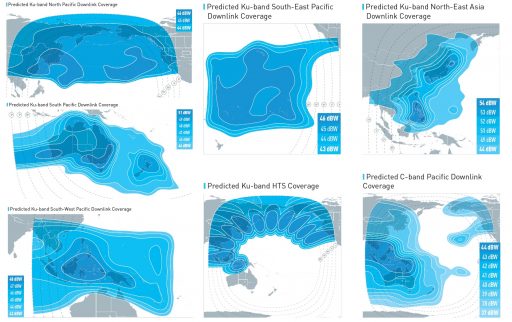
The standard Ku-Band Payload covers five service areas: a broad North Pacific Downlink area stretches from the western states of the U.S. and Canada to East Asia covering Japan and portions of China and Russia; the South Pacific Downlink zone is focused on Australia and New Zealand; the South-West Pacific Downlink zone stretches from New Caledonia over Papua New Guinea, Indonesia and Malaysia to Thailand and Myanmar; the North-East Asia Downlink Zone covers the Philippines and Japan; and the South-East Pacific Downlink Zone covers various Island states in the Pacific Ocean.
The C-Band payload covers the entire Asia-Pacific Region including the entirety of Australia and New Zealand, plus Alaska, Hawaii and the Western U.S. Eleven spot-beams are formed by the high-throughput Ku-Band payload from the U.S. West Coast over the trans-Pacific flight corridor and much of south-east Asia.
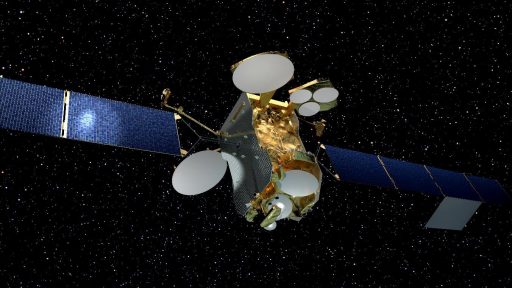
The 1.8 Gbps payload will cater to a currently underserved market that is expected to show sustained growth over the next several years. Another innovative feature of Eutelsat 172B is the ability to dynamically distribute power between the 11 elliptical high-throughput beams in order to achieve the utmost flexibility to deliver coverage where it is needed.
Eutelsat ordered the 172B satellite from Airbus Defence and Space in July 2014 based on the latest evolution of the Eurostar 3000 platform known as EOR for Electric Orbit Raising, representing the first all-electric satellite manufactured by Airbus and the first all-electric craft to be launched by the Ariane 5 rocket.
As ion propulsion matured as an operational propulsion technology, numerous satellite manufacturers incorporated ion thrusters in their satellite platforms to extend the operation lives of the spacecraft beyond what is possible with chemical propulsion alone. All-electric satellites are a relatively new trend, but provide an attractive solution given their lower launch cost plus higher mass budget available for the communications package.
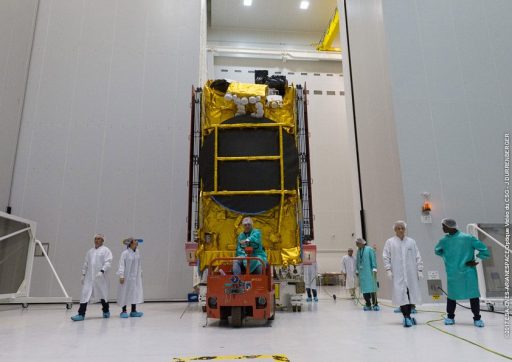
Typically, Eurostar-3000 satellites weigh in around five or six metric tons and will require the upper payload slot of the Ariane 5 for the larger of the two passengers. Using an all-electric version of the platform, satellite launch mass reduces to 3.5 metric tons and allows E3000 to fly as a lower-berth passenger which comes with a smaller price tag. After its official introduction in 2014, Eurostar-3000EOR already received six orders from Inmarsat, SES, Eutelsat and the French Government.
The all-electric E3000 satellites employ the Safran/Snecma PPS5000 electric propulsion unit for all propulsive tasks – orbit raising, fine-tuning and regular stationkeeping maneuvers. Development of the EOR platform was completed by Airbus Defence and Space in collaboration with ESA and CNES to create a competitive platform for the commercial market where Boeing dominated in the area of all-electric satellites.
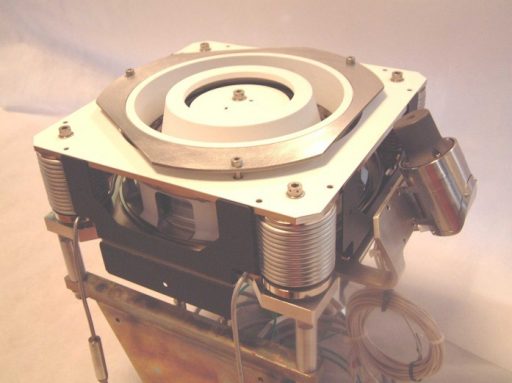
Electric propulsion has the major advantage of being much more efficient than traditional chemical propulsion in terms of specific impulse, meaning the satellite requires less propellant mass to achieve a target change in velocity. However, ion thrusters only deliver a fraction of the thrust of chemical rockets and all-electric satellites need much longer to reach their orbital destination, creating a trade-off.
Stationkeeping in Geostationary Orbit is necessary due to perturbations in the satellite’s orbit caused by gravitational influences from Earth as well as solar pressure which, in combination, cause a GEO satellite to drift in the East-West direction and induce a North-South motion that would eventually place the satellite into an inclined orbit. Over the course of a year, around 50 meters per second of change in velocity are needed for N-S stationkeeping while control in the East-West direction only needs 1.3m/s.
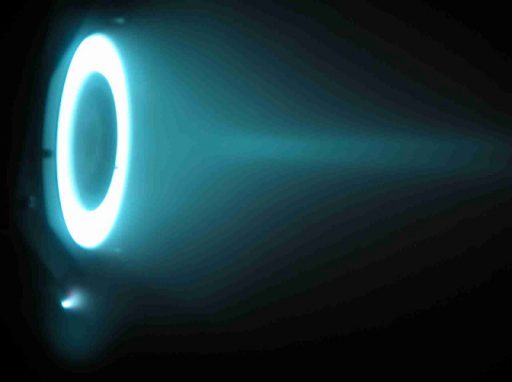
Previous iterations of E3000 used electric propulsion for stationkeeping, accumulating over 25,000 hours of operational time on satellites operated by Intelsat, Eutelsat, Inmarsat and YahSat.
The PPS5000 is a Hall Effect Thruster designed to operate between 2 and 5 Kilowatts of power with work currently underway to increase the operational power to 8kW. Initial development of PPS5000 was completed in 2003-04 taking an earlier lower-performance 1.5kW system as a basis. Development was put on hold until 2013 when the need for a higher-performance system arose due to the emerging trend of all-electric designs for 3 to 6-metric ton satellites.
The principal elements of the PPS5000 system are the Power Processing Unit, the Xenon Flow Controller and the Thruster Unit which comprises an Anode and Cathode subassembly.

The Power Processing Unit interfaces with the power and data bus of the satellite platform and is in charge of delivering the necessary voltages to the thruster unit for thruster startup and thruster operational domain according to the specific phase of the mission. The PPU can deliver 1.5 to 20 kW of power, capable of driving four thrusters at the same time, and it allows the Hall Effect Thrusters to be operated in different domains with voltages between 300 and 400 V (optimizing thrust vs. impulse).
The PPU comprises three anode modules and a pair of sequencer modules. The sequencer module is in charge of all propulsion functions such as the cathode power supplies for heaters, keepers and igniters, sequencing of the entire PPU and generating feedback telemetry. All other functions like generating the 5kW anode supply, magnet regulation and Xenon flow control reside on the Anode modules, each of which can serve up to two thrusters.
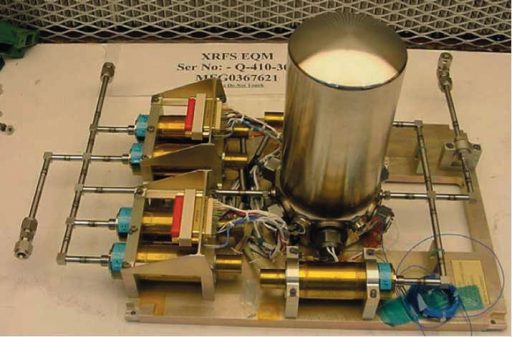
The Anode Modules each hold a pair of power cells to condition the anode power supply, auxiliary converters, magnet regulators, valve command, control modules and Filter/Thruster Switching Units that filter and switch and anode power supplies towards two thrusters. The HKISeq modules have 1553 data interfaces, PPU control & sequencing modules, pulse generators, keeper monitors, heater regulators and Thruster Switching Units generating the cathode bias. The two different controllers are interconnected via a CAN bus.
The Xenon Pressure Regulator and Feed System is responsible for providing Xenon gas flow to the thruster units at their operational working pressure. It comprises a series of valves, a plenum volume acting as buffer for pressure ripples, pressure sensors and flow regulators. Work is underway to fit the PPS5000 system with cryogenic Xenon storage which could double the Xe load in existing 100-liter tanks (130kg to 260kg), also enabling Krypton and Argon to be used as propellant.
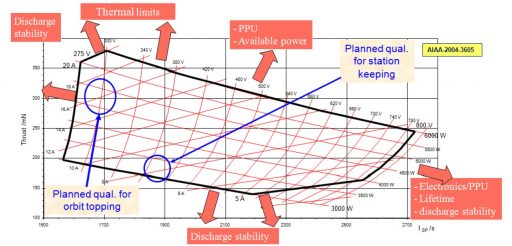
The PPS5000 thrusters have a broad operational range with a maximum thrust in excess of 350 millinewtons until reaching thermal limits and a maximal specific impulse of 2700 seconds when discharge stability and electronics lifetime become a problem. The thruster will be operated at 300 Volts (3kW) during orbit-raising, a setting optimized for a higher thrust level of 300 mN and lower impulse around 1700 seconds to accelerate the transfer sequence. In stationkeeping mode, the thruster will operate optimized for impulse and fuel efficiency at a voltage of 375V where thrust drops to 180 mN and impulse increases to 1850 seconds.
Eutelsat 172B measures 3.7 by 3.0 by 5.7 meters in size when in its stowed configuration and, when fully deployed on orbit, has a wingspan of 39.3 meters with fully deployed solar arrays.
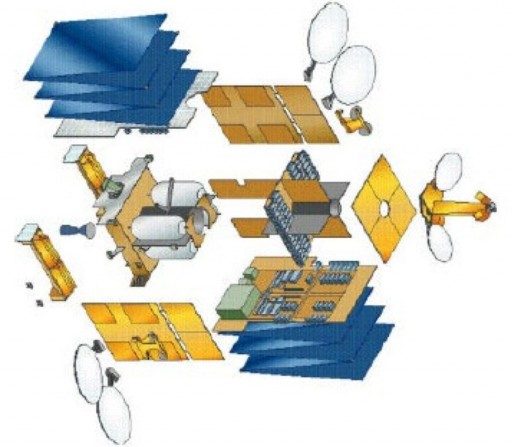
The E3000 satellite platform consists of a central cylinder which facilitates the propellant tanks and provides the structural backbone of the vehicle. The cylinder consists of several segments connected via ring-joints. Internal composite panels are mounted to the cylinder to facilitate the external panels and provide mounting platforms for the various satellite components.
Two deployable solar arrays are used for power generation featuring triple-junction Gallium-Arsenide solar cells for a nominal power generation of 13 Kilowatts. Power is stored in onboard batteries while a Power Conditioning and Distribution Unit regulates the satellite’s power bus and controls the state of charge of the batteries.
The satellite provides precise Earth-pointing capabilities and stationkeeping accuracy is +/-0.05 degrees. E-3000 provides the option of adding an electric propulsion system.
